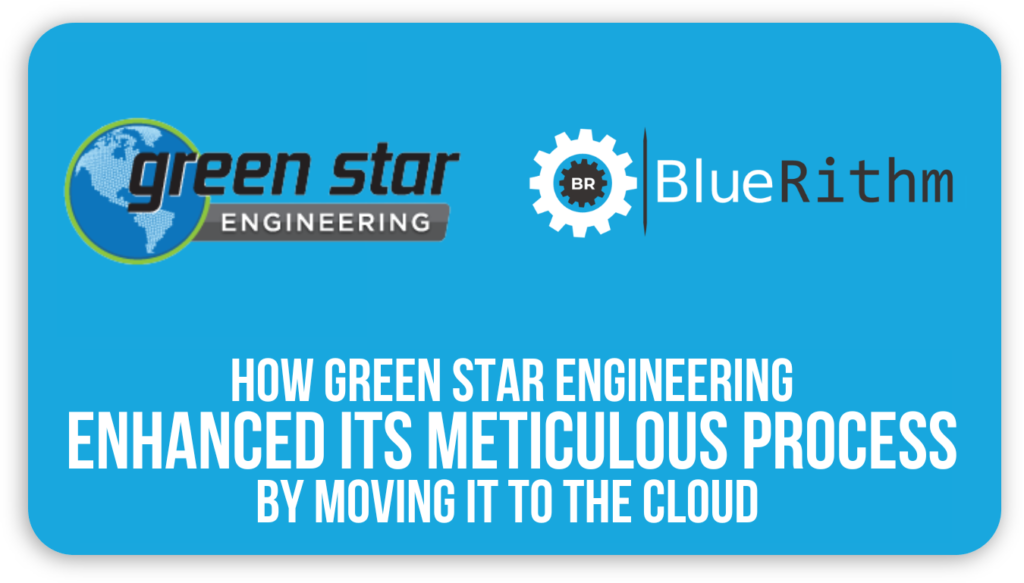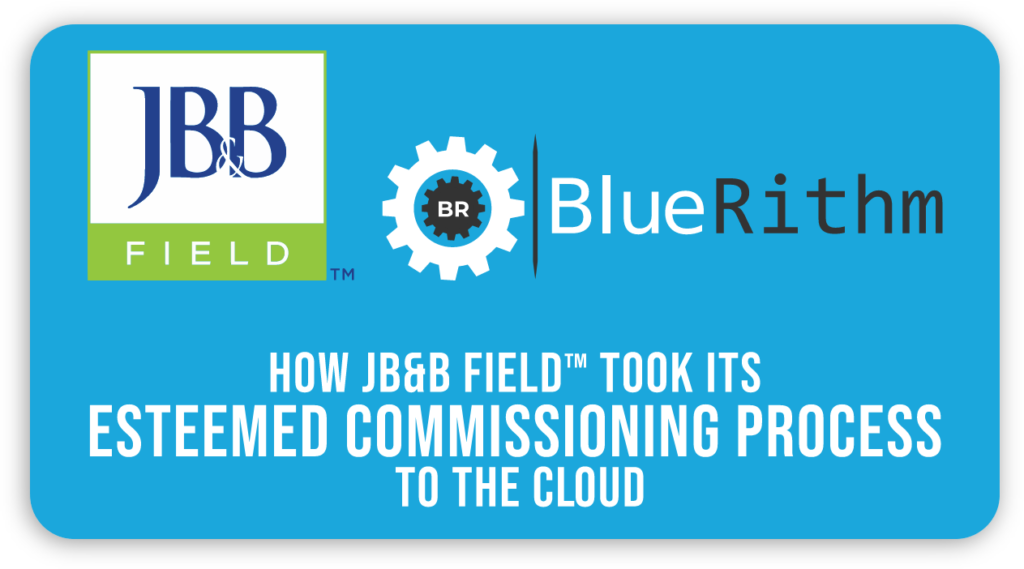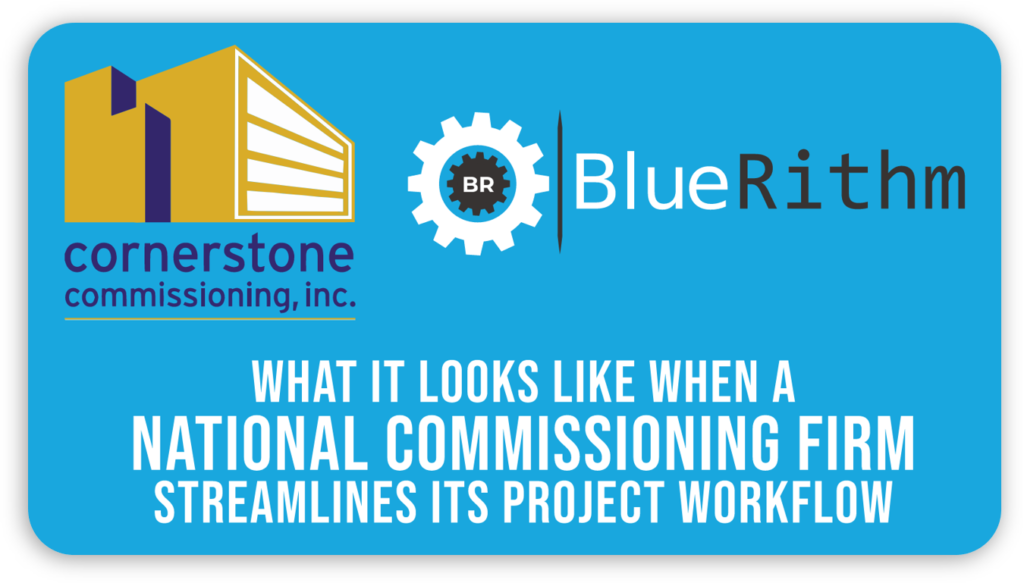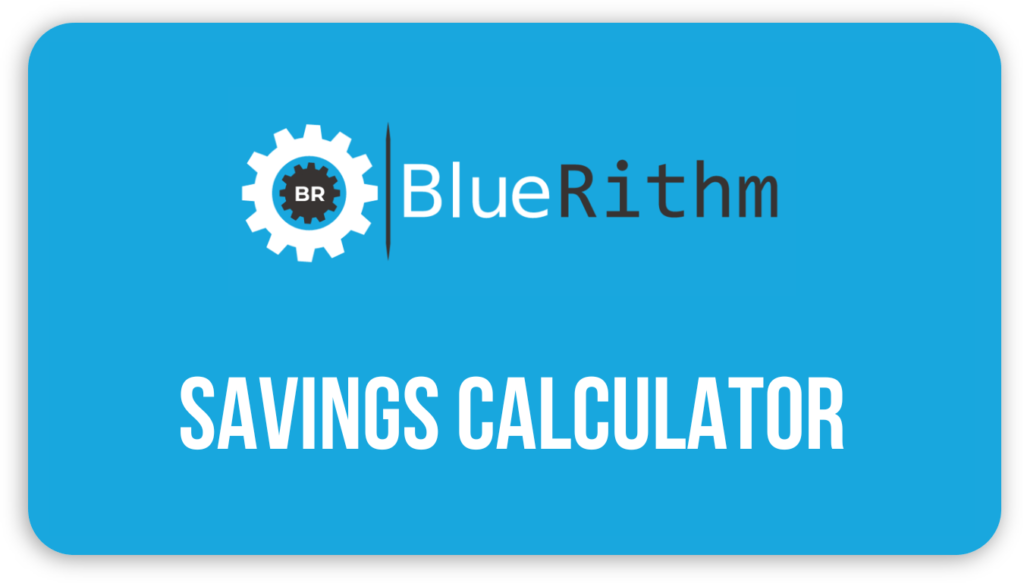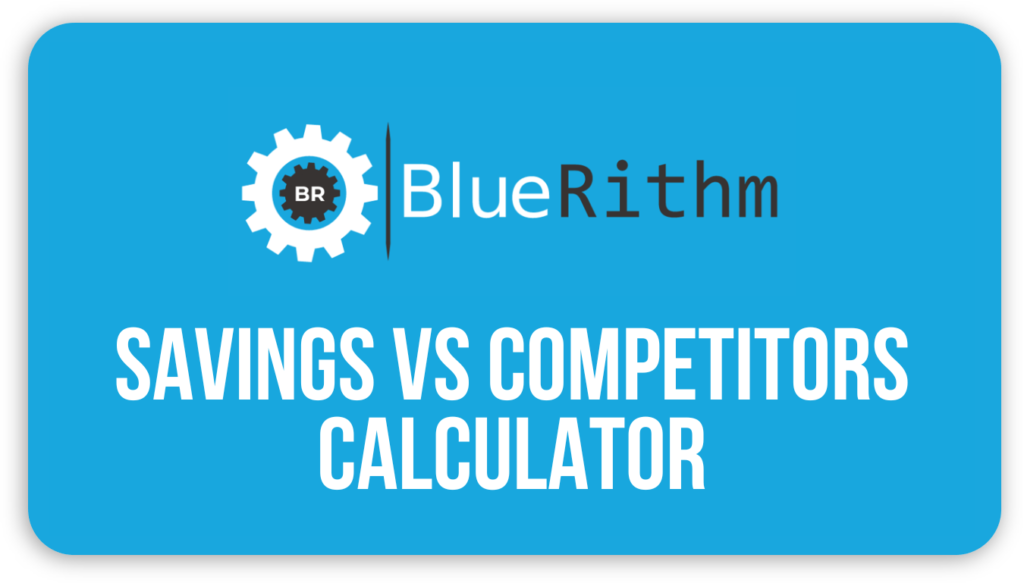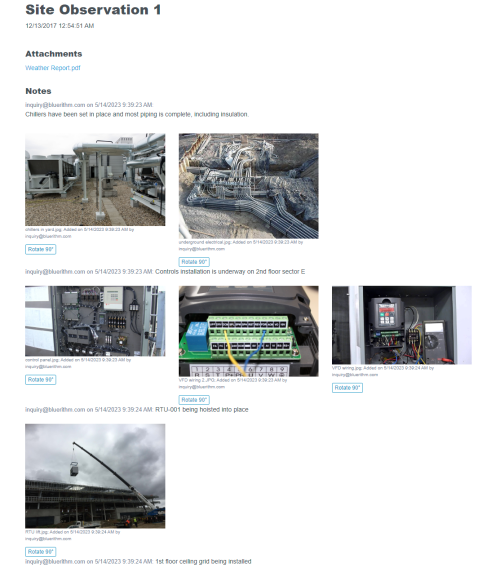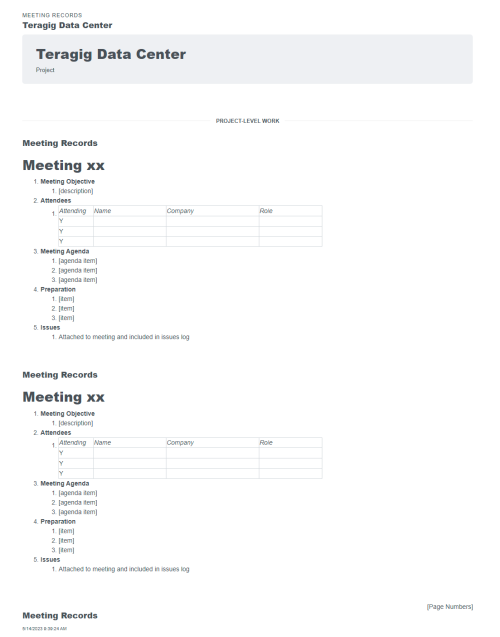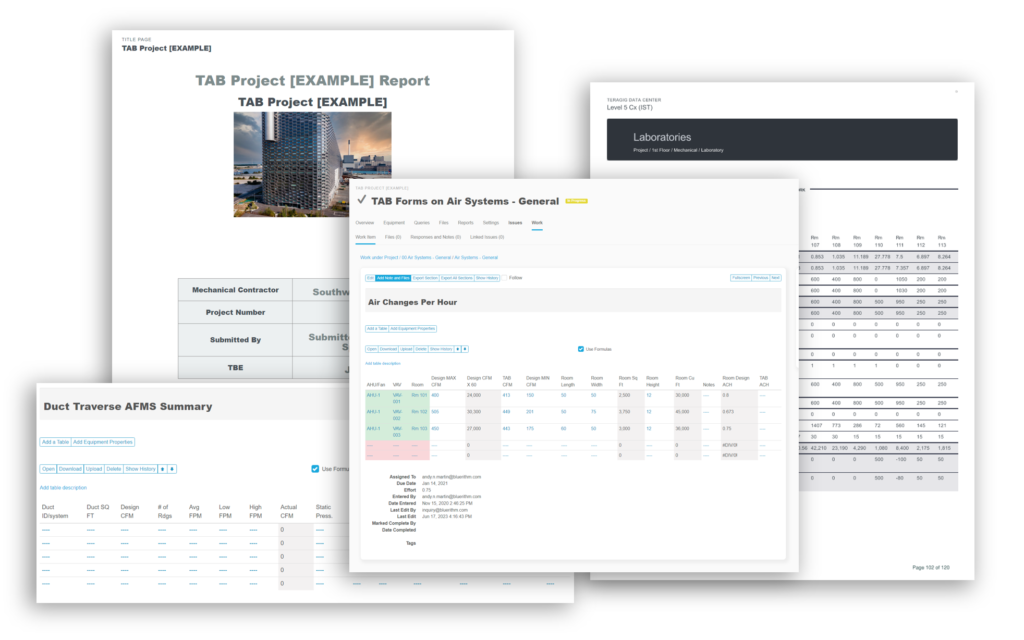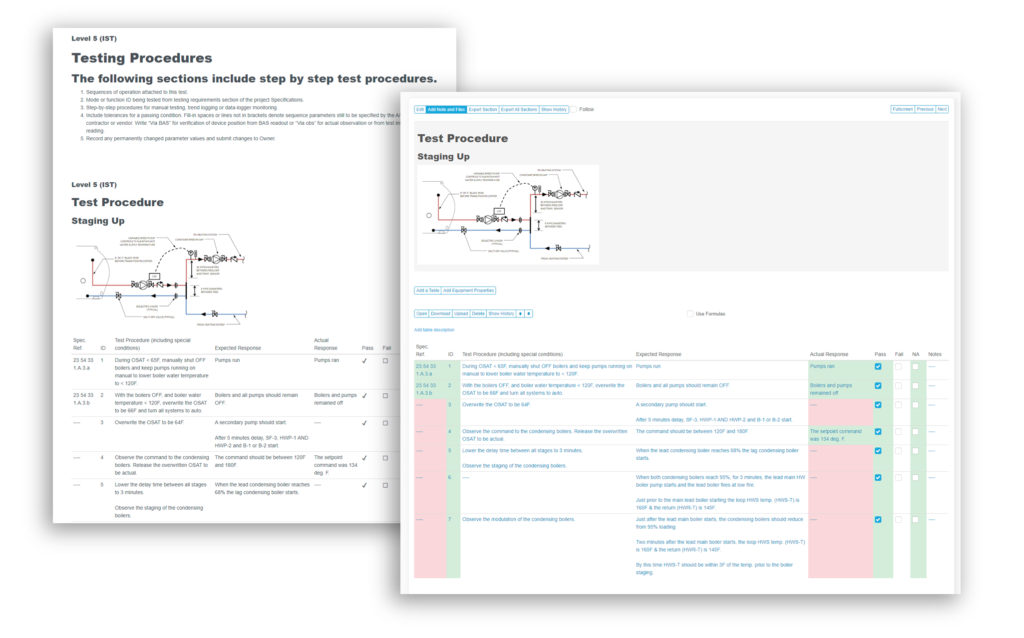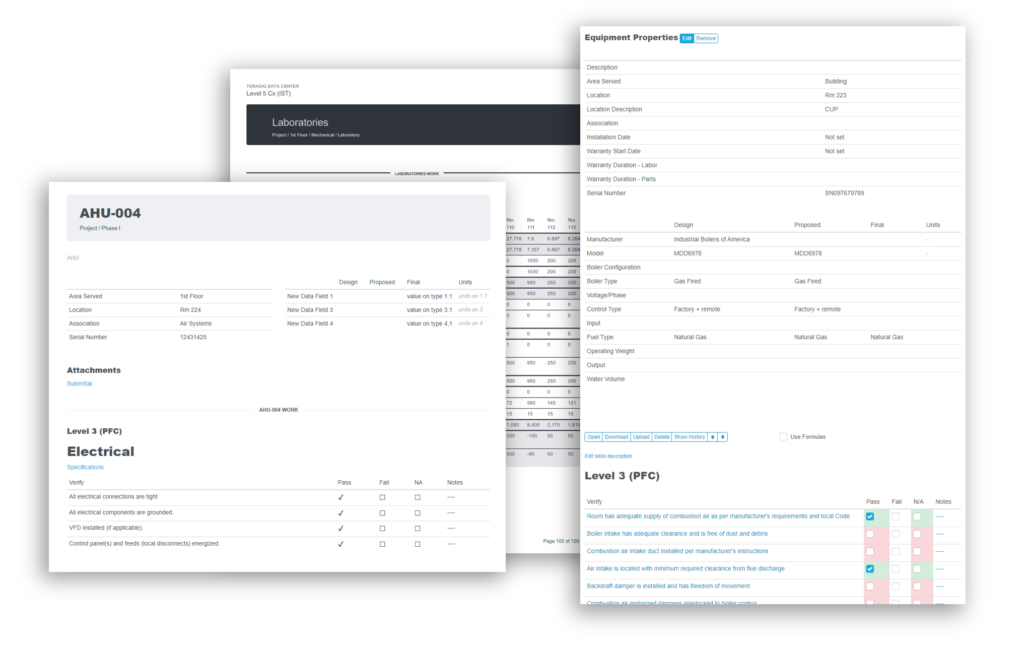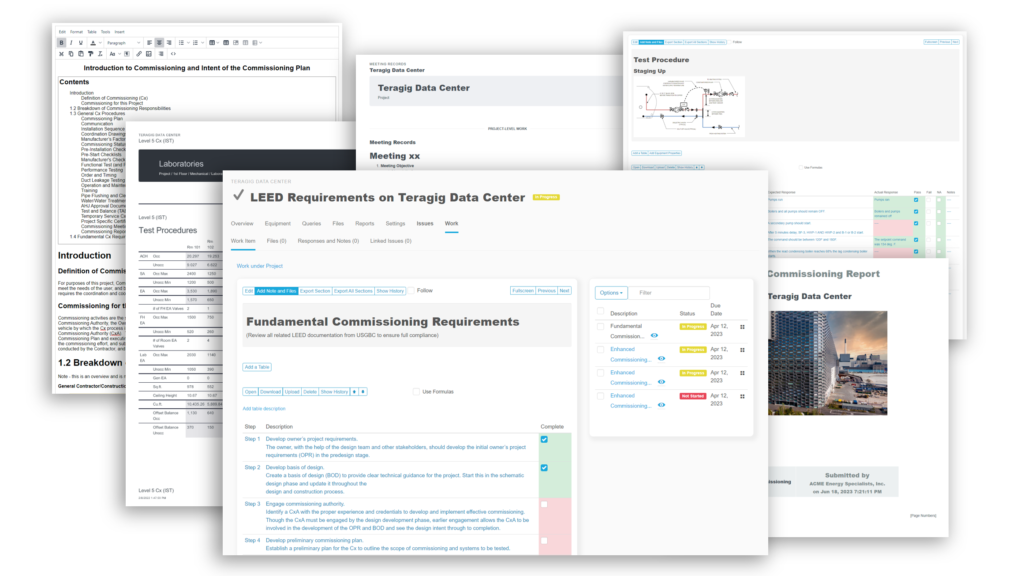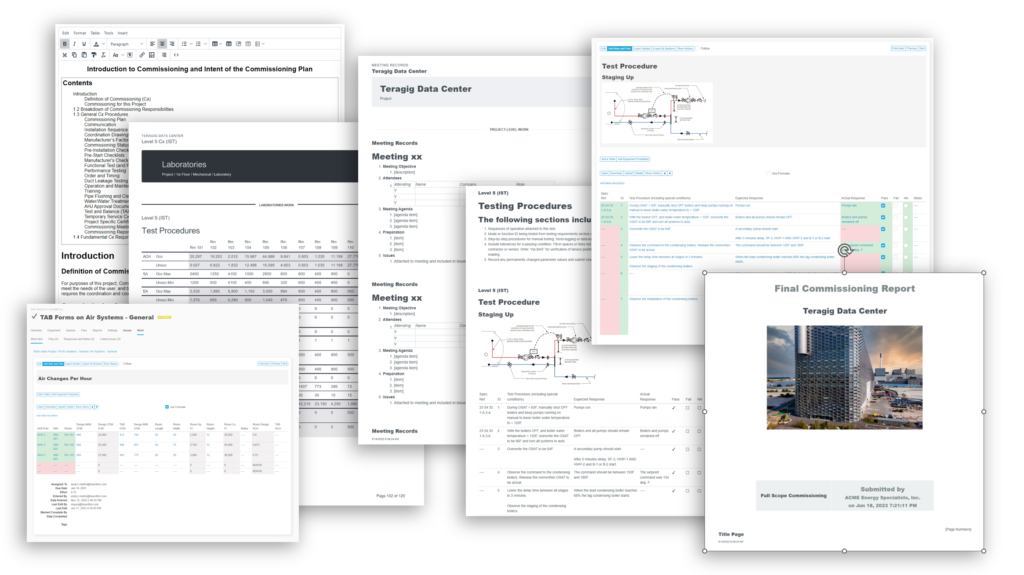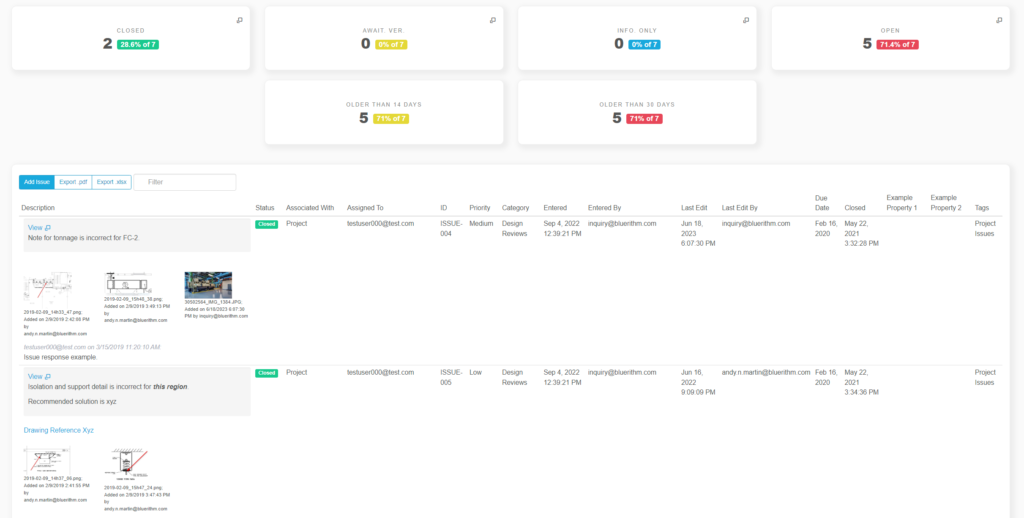When you need a robust cloud-based platform to stay organized and ensure every document is created for your existing building commissioning projects, you can trust Bluerithm to get the job done!

Guide to Existing Building Commissioning EBCx
The purpose of Existing Building Commissioning (EBCx) is to plan, assess, investigate, analyze, improve, optimize, and verify the performance of building systems and assemblies. The process of EBCx differs from new construction commissioning (NCCx) because owners and project stakeholders plan and execute the process within an already operating or occupied facility. EBCx starts and ends with an up-to-date Current Facility Requirements (CFR) for the systems and equipment being commissioned and assists in the delivery of operational systems that provide an efficient, safe, and healthy facility, optimize energy and water use, and reduce operating costs. It is a best practice for owners to hire an independent third party to provide commissioning services and act as the owner’s advocate. Commissioning Providers (CxPs) are responsible for facilitating O&M staff orientation and training and preparing and improving installed building systems documentation.
The owner’s intentions determines the level of EBCx activity, which can include:
- address operating and performance concerns
- replace or update aging equipment
- take advantage of utility incentive programs
- upgrade asset value
- make occupancy space and system changes
- comply with regulatory requirements or efficiency goals
Once the scope of commissioning is known, the approach, details, and plans for the specific project can be created. The scope can be as simple as tuning up a building or as complex as replacing and commissioning some or all of the building systems. Owners who have a portfolio of facilities may choose to conduct EBCx simultaneously on more than one of their facilities to support a broader systems integration.
Table of Contents
Types of Existing Building Commissioning EBCx
There are several different types of Existing Building Commissioning, which include:
- Retro-commissioning (RCx) – the commissioning of an existing building that has never been commissioned.
- Recommissioning (ReCx) – the commissioning of an existing building that has already been commissioned.
- Monitoring-Based Commissioning (MBCx) – commissioning that utilizes monitored data originating from the Building Automation System (BAS) or other meters processed with analysis tools, often referred to as Energy Management and Information Systems (EMIS).
- System-Specific Commissioning – commissioning that is focused on a subset of targeted systems in a building (e.g. indoor environmental quality or chiller plant efficiency)
- Ongoing Commissioning (OCx) – commissioning that continuously gathers data about existing systems and building performance and evaluates the data to ensure proper operation and performance.
Phases of Existing Building Commissioning EBCx
EBCx is comprised of the following sequential phases:
- Planning
- Project documentation gathering and assessment is conducted, which forms the basis for developing the Existing Building Commissioning goals, facility requirements, and Existing Building Commissioning Plan.
- Project documentation gathering and assessment is conducted, which forms the basis for developing the Existing Building Commissioning goals, facility requirements, and Existing Building Commissioning Plan.
- Initial Assessment
- The building is walked through in order to take notes and confirm current use and occupancy of the building, as well as document the condition of systems and equipment and known issues, identify other potential issues, interview building staff and occupants, and prepare an initial Existing Building Commissioning Plan.
- The building is walked through in order to take notes and confirm current use and occupancy of the building, as well as document the condition of systems and equipment and known issues, identify other potential issues, interview building staff and occupants, and prepare an initial Existing Building Commissioning Plan.
- Investigation
- Field observation and testing of system and equipment operation is conducted. Facility staff is interviewed, equipment and building documentation is reviewed, preventive maintenance plans are reviewed and confirmed, sequences of operation are evaluated, the Building Automation System (BAS) performance is evaluated and trend or logging data of equipment operation, findings are documented, Energy Conservation Measures (ECMs) and Facility Improvement Measures (FIMs) are identified, energy impacts and costs are estimated, the source of performance problems are evaluated, and applicable rebates or incentives are investigated.
- Field observation and testing of system and equipment operation is conducted. Facility staff is interviewed, equipment and building documentation is reviewed, preventive maintenance plans are reviewed and confirmed, sequences of operation are evaluated, the Building Automation System (BAS) performance is evaluated and trend or logging data of equipment operation, findings are documented, Energy Conservation Measures (ECMs) and Facility Improvement Measures (FIMs) are identified, energy impacts and costs are estimated, the source of performance problems are evaluated, and applicable rebates or incentives are investigated.
- Implementation
- Desired Energy Conservation Measures (ECMs) and Facility Improvement Measures (FIMs) are initiated and completed, and results and performance are verified. The systems and/or integrated systems are commissioned and tested to determine actual performance compared to the newly-updated CFR at completion.
- Desired Energy Conservation Measures (ECMs) and Facility Improvement Measures (FIMs) are initiated and completed, and results and performance are verified. The systems and/or integrated systems are commissioned and tested to determine actual performance compared to the newly-updated CFR at completion.
- Hand-Off
- The transition from a commissioning activity and commissioning team to normal operating practice and the Operations and Maintenance (O&M) team occurs. Measures are put in place to ensure persistence of performance during this phase. Documentation is updated and preventive maintenance requirements, training, and performance tracking is revised. Plans for an Ongoing Commissioning (OCx) Phase may be included.
- The transition from a commissioning activity and commissioning team to normal operating practice and the Operations and Maintenance (O&M) team occurs. Measures are put in place to ensure persistence of performance during this phase. Documentation is updated and preventive maintenance requirements, training, and performance tracking is revised. Plans for an Ongoing Commissioning (OCx) Phase may be included.
- Ongoing Commissioning (OCx)
- Monitoring and ensuring effective and efficient building performance over its lifecycle occurs. Energy use, benchmarking, conformance to and continuous revision of the current facility requirements, automated fault detection and diagnostics, and training occur during the ongoing commissioning process.
Existing Building Commissioning EBCx Team
It takes a team to document the continuity of a building project along with its performance as it moves from one phase to the next. Different team members are responsible for activities and documents during the existing building commissioning phases. The owner or representative that is ultimately responsible for the project’s success including the commissioning is always included in the commissioning team. A CxP is essential to the team and is to be designated at the inception of the planning process to manage the team and the Existing Building Commissioning process to completion. The CxP must be experienced in the facility type and systems to be addressed. This CxP provides continuity, communication, and guidance between the owner’s team and the commissioning team members.
Existing Building Commissioning (EBCx) team participants may include:
- Owner/Owner’s Representative
- This role can be carried out by the real owner or by a designated owner’s representative. The owner’s role includes detailing the project requirements in the CFR along with budgets and schedules, as well as selection of the CxP. It also includes review and acceptance of commissioning documents during the project and acceptance of the commissioning report and the resultant project performance. The pre- and post- project CFR, Assessment Plan and Report, Verification Plan and Report, Implementation Documents, Commissioning Plans, and Reports are all important documents to the owner.
- Commissioning Provider
- The general manager of the commissioning process is the Commissioning Provider (CxP). A CxP is typically hired by the owner at the beginning of the project. The CxP works for the owner and represents the owner’s interests. They provide an asset for the project team in producing a functional building that meets the owner’s requirements. The CxP assists the owner at the beginning of the project by planning and developing the CFR, reviewing the facility design documents, and assisting in the development of the Assessment, Verification, and Implementation Plans. Other members of the commissioning team and the CxP update the plans and system checklists, conducts the commissioning meetings, conducts observations and witnesses contractor equipment verification and testing, produces and updates the issues and resolutions logs, reviews the Systems Manual and process phase reports, and produces the commissioning reports during the Existing Building Commissioning process. The CxP may also prepare or review training curriculum and conduct or observe training if training is included in the project scope.
- Other Existing Building Commissioning (EBCx) Team Members
- The owner’s staff, building operations and maintenance personnel, building operations and maintenance contractors, design consultants, testing and verification technicians, green building facilitators, and jurisdictional requirements consultants are all examples of other Existing Building Commissioning team members that may be assigned specific functions and responsible for the development and/or use of specific documents.
Existing Building Commissioning Documentation
Project and commissioning documentation serves as the facility requirements, process instruction, and the historical record of the key delivery team plans and decisions throughout the planning and delivery process. The established standards of performance for building systems and verification that the designed and constructed work meets those standards is documented during commissioning. The owner reviews and accepts the principal documents and is to be available during the procedures to provide direction and acceptance when required.
The written commissioning deliverables that support Existing Building Commissioning Document Compliance and Acceptance include:
- Process Planning
- Current Facility Requirements
- Assessment
- Verification
- Implementation
- Commissioning
- Systems Manual
- Preliminary and Final Commissioning Reports
See the Building Commissioning Association’s Existing Building Commissioning Best Practices document for more details related to Existing Building Commissioning and documentation.
Sources:
Existing Building Commissioning (EBCx) – Whole Building Design Guide
Building Commissioning Association’s Existing Building Commissioning Best Practices
See How Much Bluerithm Can Save You on Your Commissioning Projects Using These Calculators
PDF Report Builder
Play Video about Bluerithm PDF Report Builder
Issue Logs and Punch Lists
Play Video about Issue Logs and Punch Lists
Move your Excel-based processes to the cloud
Start saving time and money today

